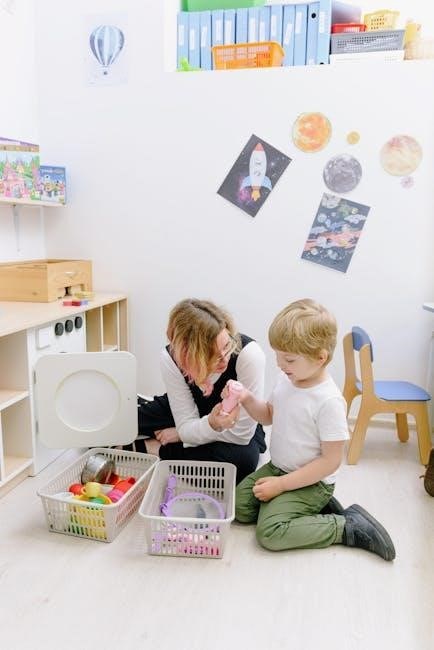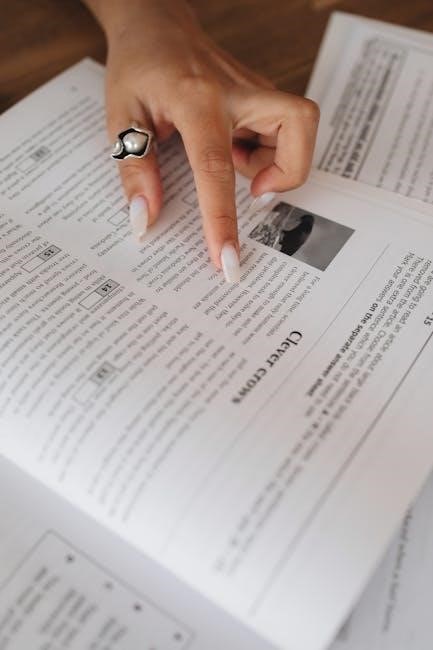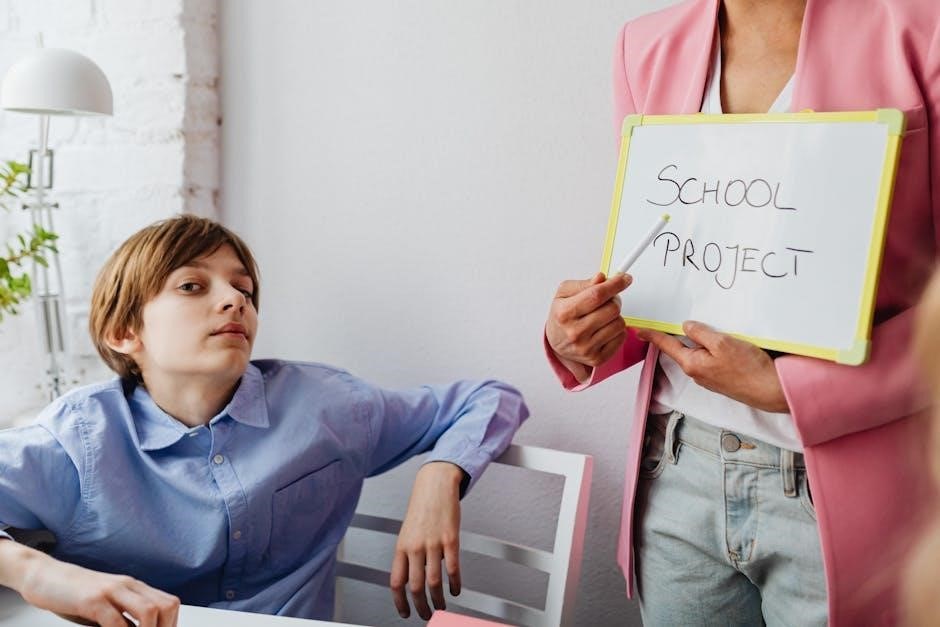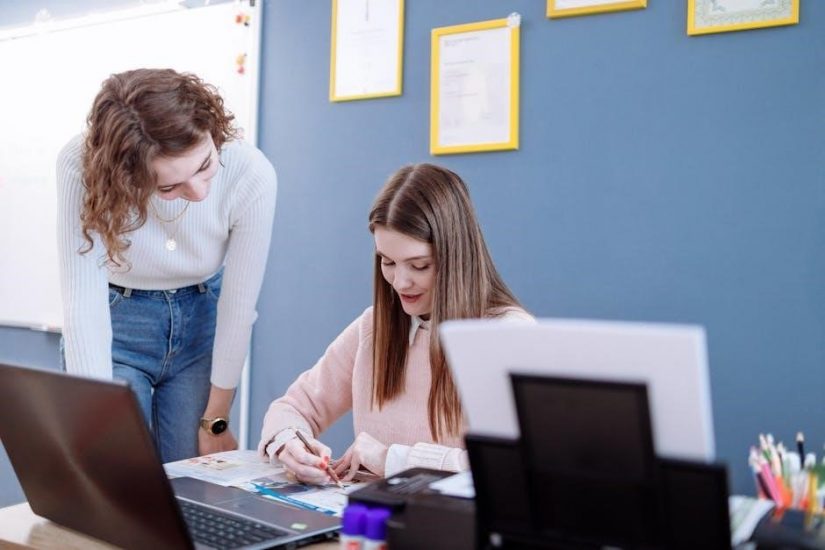Special education is a field dedicated to supporting students with diverse learning needs through personalized approaches and inclusive education. It emphasizes collaboration, evidence-based strategies, and resources for teachers.
What is Special Education?
Special education is a tailored approach to teaching students with diverse learning needs, ensuring they receive individualized support. It involves creating personalized plans, such as IEPs, to address disabilities and promote academic, social, and developmental growth. This field emphasizes inclusion, collaboration, and evidence-based strategies to help students thrive in educational settings.
The Importance of Special Education
Special education is vital for ensuring students with disabilities receive tailored support, addressing their unique learning needs. It fosters inclusive environments, promoting academic and personal growth. By providing individualized plans and evidence-based strategies, special education ensures equitable access to education, empowering students to reach their full potential and thrive in society.

Understanding the Role of a Special Education Teacher
Special education teachers are dedicated professionals who support students with disabilities, providing tailored instruction and resources to help them succeed academically and developmentally.
Key Responsibilities of a Special Education Teacher
Special education teachers assess student needs, develop IEPs, deliver tailored instruction, and monitor progress. They collaborate with general educators, parents, and specialists to ensure inclusive learning environments and support diverse abilities, fostering academic, social, and emotional growth for students with disabilities, ensuring they have the tools to thrive in their educational journey.
Different Roles and Settings for Special Education Teachers
Special education teachers work in diverse settings, including inclusive classrooms, self-contained environments, and specialized schools. They may serve as resource teachers, co-teachers, or consultants, supporting students with varying needs. Roles vary by student requirements, school policies, and program structures, emphasizing collaboration with general educators and specialists to ensure tailored instruction and support for students with disabilities in all educational environments.
Key Laws and Policies in Special Education
Special education is guided by laws like IDEA and Section 504, ensuring students with disabilities receive equal educational opportunities and tailored support, promoting inclusive learning environments.
IDEA (Individuals with Disabilities Education Act)
The Individuals with Disabilities Education Act (IDEA) is a federal law ensuring students with disabilities receive free, appropriate public education (FAPE) tailored to their needs through IEPs. It mandates collaboration between schools, families, and professionals to develop personalized plans, emphasizing least restrictive environments (LRE) and providing dispute resolution mechanisms to protect student and parental rights.
Section 504 of the Rehabilitation Act and ADA
Section 504 prohibits discrimination against individuals with disabilities in federally funded programs, requiring reasonable accommodations. The ADA extends these protections to all public and private sectors, ensuring equal access. Together, they mandate schools to provide accessible environments and services, protecting students’ rights. Eligibility under Section 504 is broader than IDEA, focusing on functional impact rather than educational need, ensuring inclusivity beyond formal education plans.
Individualized Education Programs (IEPs)
Individualized Education Programs (IEPs) are tailored plans ensuring students with disabilities receive personalized learning objectives, support services, and progress monitoring through collaborative efforts of educators and parents.
Understanding the IEP Process
The IEP process involves a collaborative team, including teachers, parents, and specialists, to develop a personalized plan for students with disabilities. It begins with assessments to identify strengths and needs, followed by goal setting and progress monitoring. The process ensures legal compliance, outlines accommodations, and fosters communication among stakeholders to support student success and inclusive education effectively.
Developing and Implementing an IEP
Developing an IEP involves collaboration between teachers, parents, and specialists to create a tailored plan addressing a student’s unique needs. Implementation requires integrating accommodations, goals, and strategies into daily teaching. Progress monitoring and regular updates ensure the plan remains effective. Teachers must adapt instruction, communicate with families, and remain flexible to meet evolving student needs while adhering to legal and ethical standards.
The Referral and Eligibility Process
The referral process identifies students needing special education, involving assessments and collaboration. Eligibility criteria ensure tailored support, guiding teachers and specialists to develop appropriate interventions.
How to Identify and Refer Students for Special Education
Teachers play a crucial role in identifying students with potential learning difficulties. They should monitor progress, document concerns, and collaborate with specialists. Initial screenings and detailed assessments help determine eligibility. Referral processes involve parents, administrators, and specialists to ensure students receive appropriate support. Early identification and timely referrals are essential for providing tailored interventions and improving student outcomes.
Eligibility Criteria and Assessment
Eligibility for special education is determined through comprehensive assessments, including academic performance, behavioral observations, and standardized tests. Multidisciplinary teams evaluate students to identify disabilities under IDEA categories. Parents and educators collaborate to ensure assessments are fair and non-discriminatory. Data collected informs IEP development, ensuring tailored support for each student’s unique needs. Accurate assessments are critical for providing appropriate interventions.

Collaboration Between General and Special Education Teachers
Collaboration between general and special education teachers is key to supporting diverse learners. Teamwork ensures shared strategies, resources, and goals for student success in inclusive settings.
Co-Teaching and Collaborative Models
Co-teaching involves general and special education teachers working together to support diverse learners. Models like One Teach, One Support and Station Teaching promote inclusive education. These collaborative approaches ensure personalized instruction, fostering academic and social growth for all students.
- Encourages shared responsibility for student learning.
- Enhances instructional strategies and resource allocation.
- Fosters a supportive and inclusive classroom environment.
Effective Communication with Parents and Professionals
Effective communication is crucial for supporting students with disabilities. Regular updates, active listening, and collaboration with parents ensure aligned efforts. Tools like IEPs and progress reports facilitate clear dialogue. Involving parents in decision-making fosters trust and shared goals, while professional collaboration among educators enhances student outcomes.
- Regular updates and progress reports.
- Active listening and clear communication.
- Collaborative planning with parents and professionals.

Classroom Strategies for Inclusive Education
Inclusive education involves differentiated instruction, Universal Design for Learning, and assistive technology to create accessible learning environments for all students, fostering academic and social growth.
Differentiated Instruction and Universal Design for Learning (UDL)
Differentiated instruction tailors teaching methods to meet diverse student needs, while UDL provides flexible learning environments. Both strategies emphasize accessible content, varied engagement, and multiple ways of demonstrating knowledge, ensuring all students can succeed. Teachers use flexible grouping, technology, and scaffolded lessons to support individualized learning, fostering an inclusive classroom where every student thrives academically and socially.
Using Assistive Technology in the Classroom
Assistive technology empowers students with disabilities to engage fully in learning. Tools like text-to-speech, speech-to-text, and adaptive devices cater to individual needs, ensuring accessibility. These technologies enable students to communicate, complete assignments, and participate actively in class, fostering independence and confidence. By integrating assistive technology, teachers create an inclusive environment where all students can thrive and reach their full potential.
Behavioral Support and Positive Interventions
Positive behavioral interventions focus on creating supportive environments to prevent disruptions and promote social-emotional growth. Teachers use proactive strategies to address challenges and foster positive student behavior.
Positive Behavioral Interventions and Supports (PBIS)
Positive Behavioral Interventions and Supports (PBIS) is a proactive framework for improving student behavior. It focuses on creating positive school climates by teaching and reinforcing appropriate behaviors. PBIS uses data-driven strategies to identify and address behavioral challenges, reducing disruptions and enhancing learning environments. By fostering a supportive atmosphere, PBIS helps students develop social-emotional skills, promoting academic success and positive interactions among all students.
De-escalation Techniques and Crisis Intervention
De-escalation techniques are essential for managing crises in special education settings. These strategies focus on calming students, reducing aggression, and preventing escalation. Active listening, empathy, and clear communication are key. Educators are trained to identify triggers, use non-verbal cues, and maintain a safe environment. Crisis intervention plans ensure structured responses, prioritizing student and staff safety while fostering a supportive atmosphere for emotional regulation and de-escalation.
Professional Development for Special Education Teachers
Professional development for special education teachers includes workshops, training, and resources to enhance skills in inclusive education, ensuring they stay updated on best practices and legal requirements.
Resources for Continuous Learning
Teachers can access online platforms, journals, and webinars for professional growth. Resources include lesson plans, research articles, and best practices for inclusive education. Professional organizations and forums also provide networking opportunities and updated strategies to support diverse learners effectively. Continuous learning ensures teachers stay informed about new technologies and methodologies in special education. These resources help educators refine their skills and adapt to evolving educational needs.
Building Skills for Inclusive Classrooms
Teachers can develop skills for inclusive classrooms by participating in professional development, collaborating with special education staff, and learning about assistive technologies. Training in differentiated instruction, Universal Design for Learning (UDL), and cultural responsiveness equips educators to meet diverse needs. These skills help create a supportive environment where all students, including those with disabilities, can thrive academically and socially.

Addressing Diverse Learning Needs
Addressing diverse learning needs requires tailored strategies, inclusive practices, and evidence-based methods to support students with varying abilities, ensuring each learner achieves their full potential in the classroom.
Strategies for Students with Autism, ADHD, and Other Disabilities
Teachers can use structured routines, visual aids, and sensory integration techniques to support students with autism. For ADHD, strategies include movement breaks and clear expectations. Positive Behavioral Interventions and Supports (PBIS) help manage behaviors. Individualized Education Programs (IEPs) and Response to Intervention (RTI) plans ensure tailored support. Collaborating with specialists and leveraging assistive technology further enhances learning outcomes for diverse learners.
Supporting Students with Physical and Sensory Disabilities
Teachers can support students with physical disabilities by ensuring accessible learning environments and using assistive technologies. For sensory disabilities, adapt materials (e;g., large print or Braille) and provide sensory-friendly tools. Collaboration with occupational therapists and specialists is key. Incorporating flexible seating and technology, like text-to-speech devices, promotes independence. IEPs guide tailored accommodations, ensuring all students engage meaningfully in the classroom.
Technology in Special Education
Technology enhances learning for students with disabilities by providing assistive tools and fostering engagement through digital resources, making education more accessible and personalized for diverse needs.
Assistive Technology Tools and Devices
Assistive technology tools, such as text-to-speech software, speech-to-text devices, and Braille displays, empower students with disabilities to engage actively in learning. These devices cater to diverse needs, including visual, auditory, and physical impairments, by providing tailored support. They enhance accessibility, promote independence, and make education more inclusive, ensuring all students can participate meaningfully in the classroom environment.
Digital Resources for Special Education
Digital resources for special education include online platforms offering lesson plans, research articles, and educational apps tailored for diverse learning needs. These tools provide interactive activities, multimedia content, and customizable materials to support teachers in creating adaptive learning environments. They also offer professional development opportunities, enabling educators to enhance their skills and deliver effective instruction for students with disabilities, fostering engagement and academic success.

Parent-Teacher Partnerships
Parent-teacher partnerships are crucial for supporting students with disabilities. Effective communication and collaboration between parents and educators create a cohesive learning environment, fostering academic and personal growth.
Building Strong Relationships with Parents
Building strong relationships with parents is essential for supporting students with disabilities. Open communication, active listening, and mutual respect foster trust and collaboration. Regular updates on student progress, involvement in IEP development, and shared goal-setting strengthen partnerships. Parents’ insights into their child’s needs are invaluable, ensuring tailored support. Educators should encourage parental involvement in educational planning, creating a collaborative environment that benefits the student.
Parental Involvement in IEP Development
Parental involvement in IEP development is crucial for creating effective, student-centered plans. Parents bring unique insights into their child’s strengths, challenges, and goals. Active participation ensures alignment between home and school strategies. Educators should engage parents throughout the process, from initial assessments to implementation, fostering a collaborative environment that respects parental input and ensures the IEP addresses the child’s needs comprehensively.
Culturally Responsive Special Education
Culturally responsive special education emphasizes understanding and respecting diverse backgrounds, ensuring inclusive practices that address the unique needs of all learners equitably and effectively.
Understanding Cultural Diversity in the Classroom
Cultural diversity in the classroom involves recognizing and valuing the unique backgrounds, experiences, and perspectives of all students. Teachers must be aware of cultural differences to create an inclusive environment that fosters equity and respect. By understanding and addressing these differences, educators can tailor instruction to meet diverse learning needs, ensuring all students feel valued and supported in their educational journey.
Addressing the Needs of Diverse Learners
Addressing the needs of diverse learners requires tailored strategies to support students with varying abilities, learning styles, and cultural backgrounds. Teachers can use differentiated instruction, Universal Design for Learning (UDL), and assistive technologies to create an inclusive environment. By recognizing individual strengths and challenges, educators can adapt curriculum and teaching methods to ensure all students, regardless of ability, have opportunities to succeed and grow academically and socially.
The Future of Special Education
The future of special education focuses on emerging technologies, personalized learning, and inclusive practices to enhance accessibility and equity for diverse learners.
Emerging Trends and Innovations
Emerging trends in special education include the integration of assistive technologies, AI-driven tools, and virtual reality to enhance learning experiences. Personalized learning platforms and data-driven instruction are becoming central, enabling tailored support. Collaborative teaching models and professional development programs are also evolving, fostering inclusive classrooms and equitable access for all learners.
Advocating for Students with Disabilities
Advocating for students with disabilities involves promoting inclusive education, ensuring access to tailored resources, and fostering a supportive environment. Teachers play a crucial role in amplifying student voices and collaborating with parents and professionals. Staying informed about legal rights and best practices is essential to champion equitable opportunities and empower learners to thrive academically and socially.
